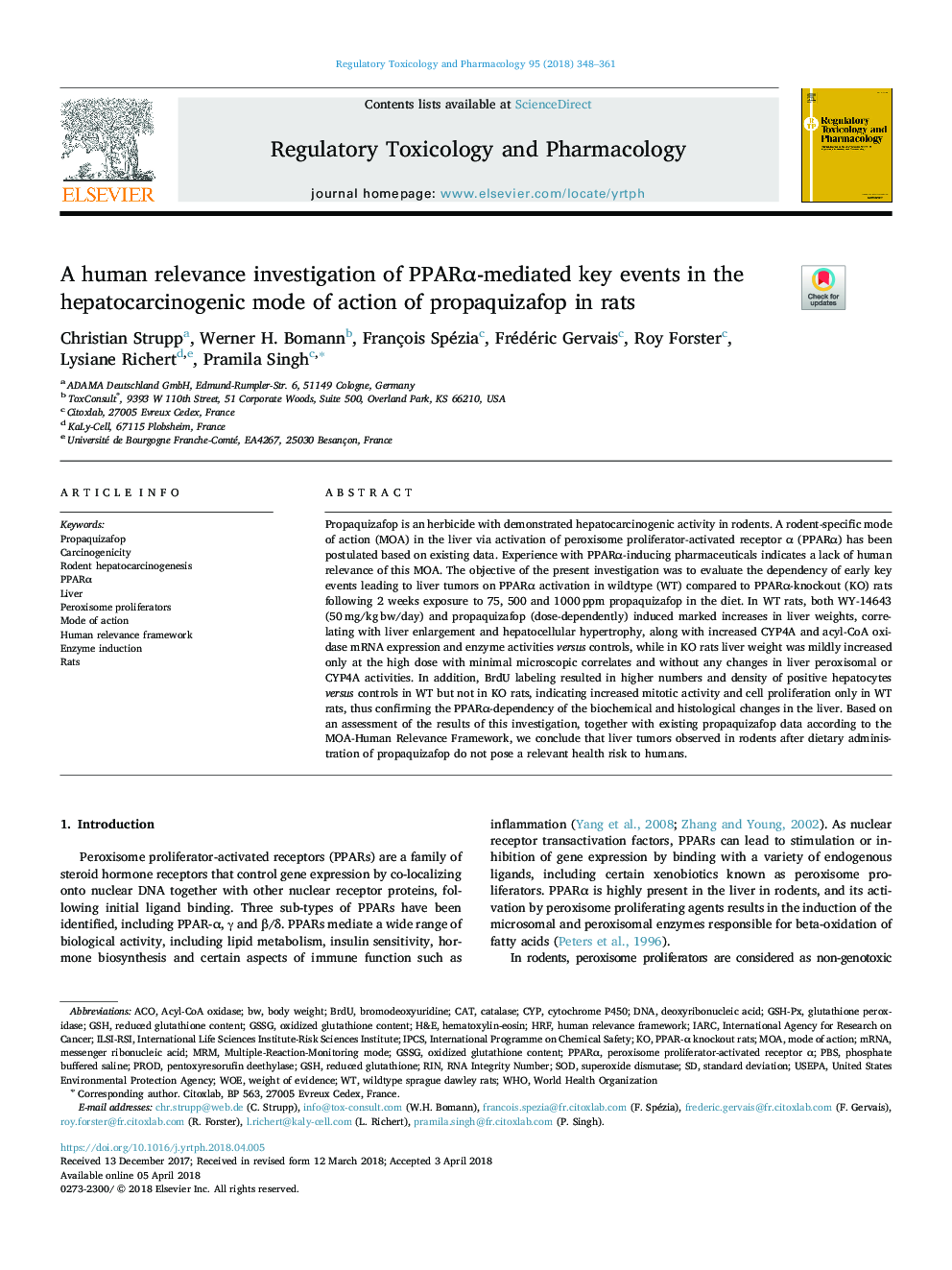| Article ID | Journal | Published Year | Pages | File Type |
|---|---|---|---|---|
| 8551242 | Regulatory Toxicology and Pharmacology | 2018 | 14 Pages |
Abstract
Propaquizafop is an herbicide with demonstrated hepatocarcinogenic activity in rodents. A rodent-specific mode of action (MOA) in the liver via activation of peroxisome proliferator-activated receptor α (PPARα) has been postulated based on existing data. Experience with PPARα-inducing pharmaceuticals indicates a lack of human relevance of this MOA. The objective of the present investigation was to evaluate the dependency of early key events leading to liver tumors on PPARα activation in wildtype (WT) compared to PPARα-knockout (KO) rats following 2 weeks exposure to 75, 500 and 1000â¯ppm propaquizafop in the diet. In WT rats, both WY-14643 (50â¯mg/kgâ¯bw/day) and propaquizafop (dose-dependently) induced marked increases in liver weights, correlating with liver enlargement and hepatocellular hypertrophy, along with increased CYP4A and acyl-CoA oxidase mRNA expression and enzyme activities versus controls, while in KO rats liver weight was mildly increased only at the high dose with minimal microscopic correlates and without any changes in liver peroxisomal or CYP4A activities. In addition, BrdU labeling resulted in higher numbers and density of positive hepatocytes versus controls in WT but not in KO rats, indicating increased mitotic activity and cell proliferation only in WT rats, thus confirming the PPARα-dependency of the biochemical and histological changes in the liver. Based on an assessment of the results of this investigation, together with existing propaquizafop data according to the MOA-Human Relevance Framework, we conclude that liver tumors observed in rodents after dietary administration of propaquizafop do not pose a relevant health risk to humans.
Keywords
Human relevance frameworkacyl-CoA oxidaseHRFMOAIPCsPPARαMRMGSSGACOWOEGSHPRODCATCyPmRNAPBSIARCDNAGSH-PxH&EPeroxisome proliferatorsInternational Agency for Research on CancerUnited States Environmental Protection Agencydeoxyribonucleic acidEnzyme inductionstandard deviationInternational Programme on Chemical SafetyBrdUbromodeoxyuridineMode of actionmessenger ribonucleic acidRINWorld Health OrganizationSODCarcinogenicitySuperoxide dismutaseCytochrome P450RNA Integrity NumberPhosphate buffered salineRatshematoxylin-eosinbody weightWeight of evidenceCatalasereduced glutathioneLiverWHOUSEPAglutathione peroxidaseperoxisome proliferator-activated receptor α
Related Topics
Life Sciences
Environmental Science
Health, Toxicology and Mutagenesis
Authors
Christian Strupp, Werner H. Bomann, François Spézia, Frédéric Gervais, Roy Forster, Lysiane Richert, Pramila Singh,
